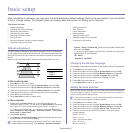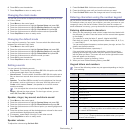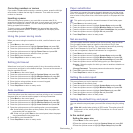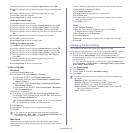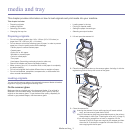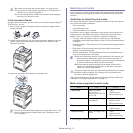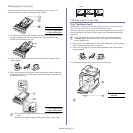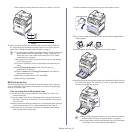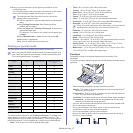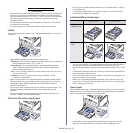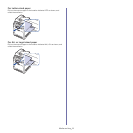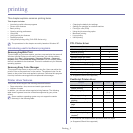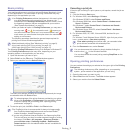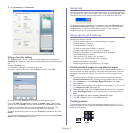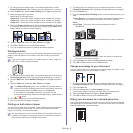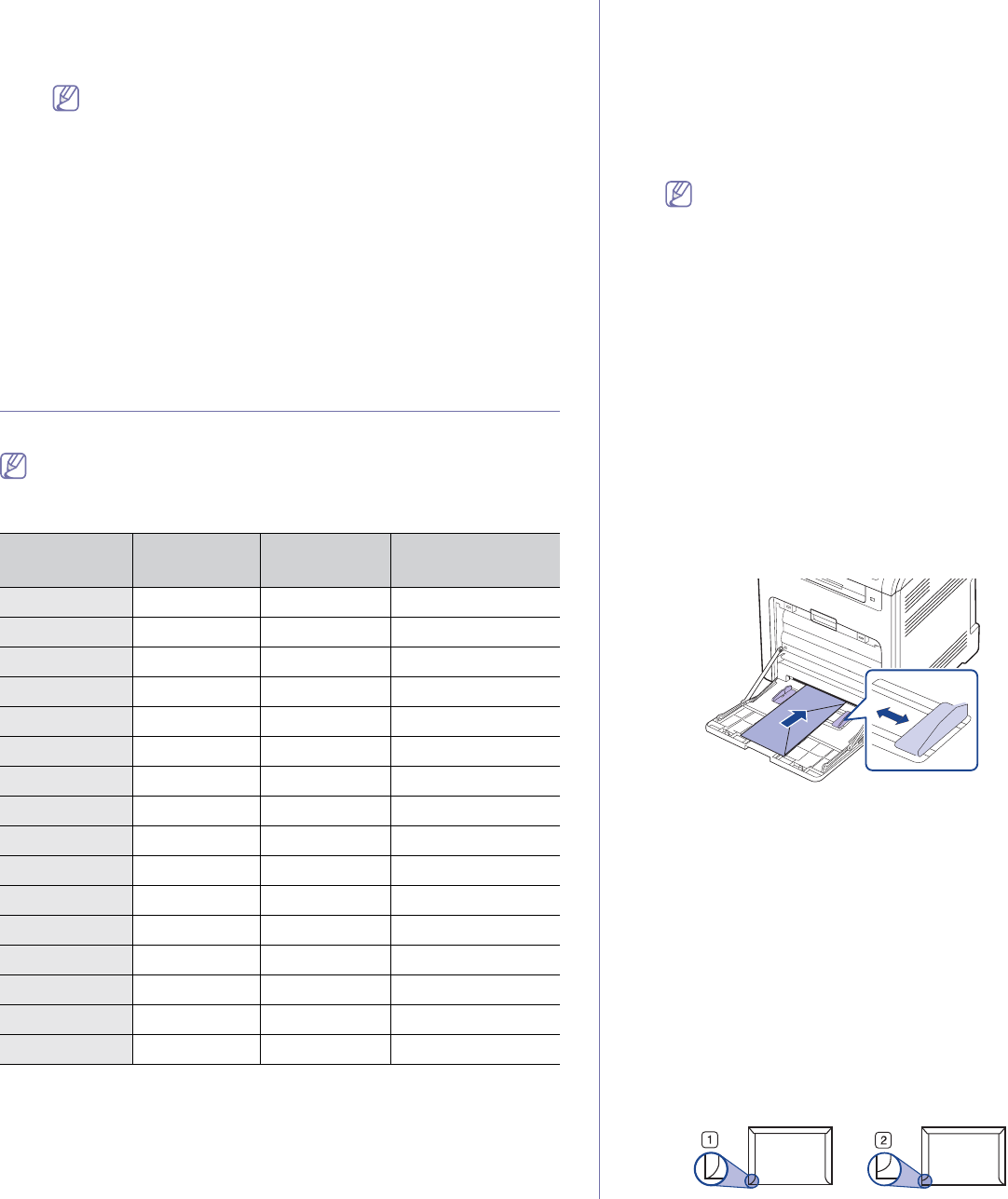
Media and tray_ 5
5.When you print a document, set the paper type and size for the
multi-purpose tray.
For information about setting the paper type and size on the control
panel (See "Setting the paper size and type" on page 7).
The settings made from the machine driver override the
settings on the control panel.
a)T
o print in application, open an application and start the print
menu.
b)Open Printing
Preferences (See "Opening printing
preferences" on page 2).
c)Pr
ess the Paper tab in Printing Preferences, and select an
appropriate paper type.
For example, if you want to use a label, set the paper type
to Label.
d)Select Ma
nual Feeder in paper source, then press OK.
e)Start prin
ting in application.
f)After
printing, close the multi-purpose tray.
Printing on special media
The table below shows the available special media for each tray.
When using special media, we recommend you feed one paper at a
time. Check the maximum input number of media for each tray (See
"Print media specifications" on page 3).
Types Tray 1 Optional tray
Multi-purpose
tray
Plain ● ● ●
Thick ● ● ●
Thicker ●
Extra Thick ●
Thin ● ● ●
Cotton ● ● ●
Color ● ● ●
Preprinted ● ● ●
Recycled ● ● ●
Envelope ●
Labels ●
CardStock ●
Bond ●
Archive ●
Glossy Photo ●
Matte Photo ●
( ●: Supported, Blank: Not supported)
The media types are shown in the Printing
Preferences. This paper type
option allows you to set the type of paper to be loaded in the tray. This
setting appears in the list, so that you can select it. This will let you get the
best quality printout. If not, the desired print quality may not be achieved.
• Plain: 70 to 90 g/m
2
(19 to 24 lb) Normal plain paper.
• Thick: 90 to 105 g/m
2
(24 to 28 lb) thick paper.
• Th
icker: 106 to 120 g/m
2
(28 to 32 lb) thicker paper.
• Extra Thick
: 120 to 170 g/m
2
(32 to 46 lb) extra thick.
• Th
in: 60 to 70 g/m
2
(16 to 19 lb) thin paper.
• C
otton: 75 to 90 g/m
2
(20 to 24 lb) cotton paper.
• Co
lor: 75 to 90 g/m
2
(20 to 24 lb) color-backgrounded paper.
• Pr
eprinted: 75 to 90 g/m
2
(20 to 24 lb) preprinted/letterhead paper.
• R
ecycled: 70 to 90 g/m
2
(19 to 24 lb) recycled paper.
When you use recycled paper as a used paper, printouts might be
wrinkled and/or jamming may occur due to excessive curl.
• Envelope: 75 to 90 g/m
2
(20 to 24 lb) envelope.
• La
bels: 120 to 150 g/m
2
(32 to 40 lb) label.
• C
ardStock: 171 to 220 g/m
2
(46 to 59 lb) cardstock.
• Bo
nd: 105 to 120 g/m
2
(28 to 32 lb) bond.
• Ar
chive: 70 to 90 g/m
2
(19 to 24 lb). If you need to keep the print-out for
a long period time, such as archives, select this option.
• Glossy Photo: 111 to 130 g/m
2
(30 to 35lb), 131 to 175 g/m
2
(35 to
47lb), 176 to 220 g/m
2
(47 to 59lb) glossy photo paper.
• Matte Photo: 111 to 130 g/m
2
(30 to 35lb), 131 to 175 g/m
2
(35 to 47lb),
176 to 220 g/m
2
(47 to 59lb) matte photo paper.
Envelope
Successful printing on envelopes depends upon the quality of the
envelopes.
To print an envelope, place it flap side up with the stamp area bottm the top
right side.
• When selecting envelopes, consider the following factors:
-We
ight: The weight of the envelope paper should not exceed 90 g/m
2
otherwise, jam may occur.
-Cons
truction: Prior to printing, envelopes should lie flat with less than
6 mm curl, and should not contain air.
-Condition: Envelopes should not be wrinkled, nicked, either damaged.
-Te
mperature: Use envelopes that are compatible with the heat and
pressure of the machine during operation.
• U
se only well-constructed envelopes with sharp-and well-creased folds.
• D
o not use stamped envelopes.
• D
o not use envelopes with clasps, snaps, windows, coated lining,
self-adhesive seals, or other synthetic materials.
• D
o not use damaged or poorly made envelopes.
• Be
sure the seam at both ends of the envelope extends all the way to
the corner of the envelope.



